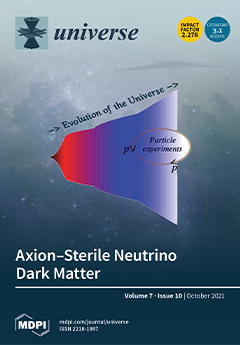Open AccessEditor’s ChoiceArticle
A New Sample of Gamma-Ray Emitting Jetted Active Galactic Nuclei—Preliminary Results
by
Luigi Foschini, Matthew L. Lister, Sonia Antón, Marco Berton, Stefano Ciroi, Maria J. M. Marchã, Merja Tornikoski, Emilia Järvelä, Patrizia Romano, Stefano Vercellone and Elena Dalla Bontà
Cited by 17 | Viewed by 3492
Abstract
We are compiling a new list of gamma-ray jetted active galactic nuclei (AGN), starting from the fourth catalog of point sources of the
Fermi Large Area Telescope (LAT). Our aim is to prepare a list of jetted AGN with known redshifts and classifications
[...] Read more.
We are compiling a new list of gamma-ray jetted active galactic nuclei (AGN), starting from the fourth catalog of point sources of the
Fermi Large Area Telescope (LAT). Our aim is to prepare a list of jetted AGN with known redshifts and classifications to be used to calibrate jet power. We searched in the available literature for all the published optical spectra and multiwavelength studies useful to characterize the sources. We found new, missed, or even forgotten information leading to a substantial change in the redshift values and classification of many sources. We present here the preliminary results of this analysis and some statistics based on the gamma-ray sources with right ascension within the interval
(J2000). Although flat-spectrum radio quasars and BL Lac objects are still the dominant populations, there is a significant increase in the number of other objects, such as misaligned AGN, narrow-line Seyfert 1 galaxies, and Seyfert galaxies. We also introduced two new classes of objects: changing-look AGN and ambiguous sources. About one third of the sources remain unclassified.
Full article
►▼
Show Figures





